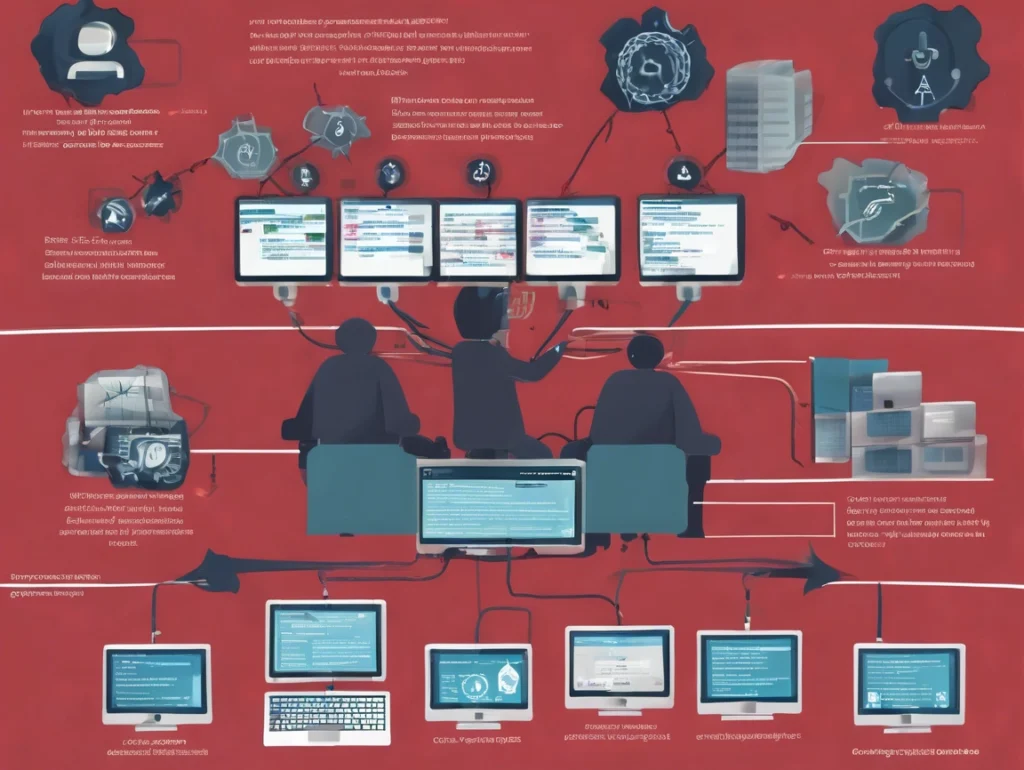Penetration testing, often referred to as ethical hacking, is a crucial part of cybersecurity practices. It simulates a real-world cyberattack to identify vulnerabilities in a system before malicious hackers can exploit them. In this article, we’ll break down the penetration testing process step by step, offering insights into what happens during each phase.

1. Planning and Scoping
The first phase of penetration testing is crucial for defining the scope and objectives of the test. In this phase, both the client and the penetration testing team agree on the parameters of the engagement. This includes:
Defining the Scope: Which systems, applications, networks, or infrastructure will be tested? It’s essential to clarify whether external or internal systems will be targeted.
Setting Objectives: What does the client want to achieve from the test? Objectives could range from discovering vulnerabilities in a specific application to testing the overall security posture of the entire network.
Rules of Engagement: Ethical hackers must adhere to specific rules, such as working within a set time frame or avoiding disruptions to the business. These rules ensure the safety and integrity of the systems being tested.
2. Information Gathering (Reconnaissance)
Once the scope is established, the penetration testers begin gathering information about the target. This phase is called reconnaissance, and it can be broken down into two types:
Passive Reconnaissance: This involves collecting publicly available information without interacting directly with the target system. Methods include searching the web, social media, or domain registration databases to identify potential attack vectors.
Active Reconnaissance: In this stage, testers may directly interact with the target systems, such as scanning for open ports or identifying vulnerabilities in applications. While this provides valuable information, it can also alert the target if not done cautiously.
Reconnaissance helps the testers understand the target environment and plan subsequent attack strategies more effectively.
3. Vulnerability Assessment
With information in hand, the penetration testers now begin to identify potential vulnerabilities in the system. This involves scanning systems, applications, and networks using a combination of automated tools and manual techniques to locate weak points. The tools used in this phase include vulnerability scanners, which identify known weaknesses, as well as custom scripts and manual testing for more complex issues.
The goal of this phase is to create a comprehensive list of vulnerabilities that could be exploited by an attacker, such as outdated software, weak passwords, misconfigured systems, or unpatched security flaws.
4. Exploitation
In the exploitation phase, testers attempt to exploit the identified vulnerabilities to gain unauthorized access to the system. This is where penetration testers simulate a real cyberattack. The exploitation process typically involves:
Gaining Access: Testers attempt to break into systems, applications, or networks by exploiting weaknesses such as weak passwords, SQL injection, or buffer overflows.
Escalating Privileges: Once access is gained, testers often try to elevate their privileges within the system, which could allow them to take full control of the network or access sensitive data.
Pivoting: If attackers gain access to one system, they may attempt to use that system to access others within the network.
The goal here is not just to exploit the vulnerabilities but also to assess how far an attacker could potentially go once inside the system.
5. Post-Exploitation
After successfully exploiting a vulnerability, the next phase is post-exploitation. This stage involves:
Data Harvesting: Extracting valuable information from the compromised system, such as sensitive files, credentials, or personal data.
Maintaining Access: Ethical hackers may attempt to set up backdoors or other mechanisms to ensure they can access the system again later, simulating the persistence methods used by malicious hackers.
Documenting the Breach: Testers thoroughly document the steps taken during the exploitation phase, highlighting what was accessed, how, and what damage could have been done.
The purpose of post-exploitation is to determine the potential impact of an actual attack and how long a real-world attacker might remain undetected.
6. Reporting and Remediation
The final phase of the penetration testing process involves preparing a detailed report for the client. This report outlines:
Findings: A summary of the vulnerabilities discovered, including severity and potential impact.
Exploitation: Details of the exploitation activities, demonstrating what an attacker could do if those vulnerabilities were not mitigated.
Recommendations: Actionable suggestions for fixing the vulnerabilities, such as patching systems, enhancing network defenses, or tightening access controls.
In addition to the report, testers often provide recommendations for improving overall security posture and may assist with remediation efforts.
7. Retesting and Validation
After the client has implemented the recommended fixes, it’s important to verify whether the vulnerabilities have been properly addressed. Retesting may be necessary to ensure that all the identified issues have been resolved and that no new vulnerabilities have been introduced.
Penetration testers will recheck the systems, reattempt exploitations, and confirm the effectiveness of the security measures put in place. This final check provides peace of mind that the system is secure against potential threats.
Conclusion
Penetration testing is a vital component of any organization’s cybersecurity strategy. By simulating real-world attacks, penetration testers can identify vulnerabilities, assess potential impacts, and help businesses fortify their defenses. Following a structured, step-by-step process ensures thoroughness and efficiency, from planning and reconnaissance to exploitation and remediation.
With cyber threats constantly evolving, regular penetration tests are essential to staying ahead of hackers and safeguarding valuable assets and data.
Looking for a new IT Partner?
Talk to us about your current business needs and future IT goals, so we can help choose the right technology to move your business forwards.
